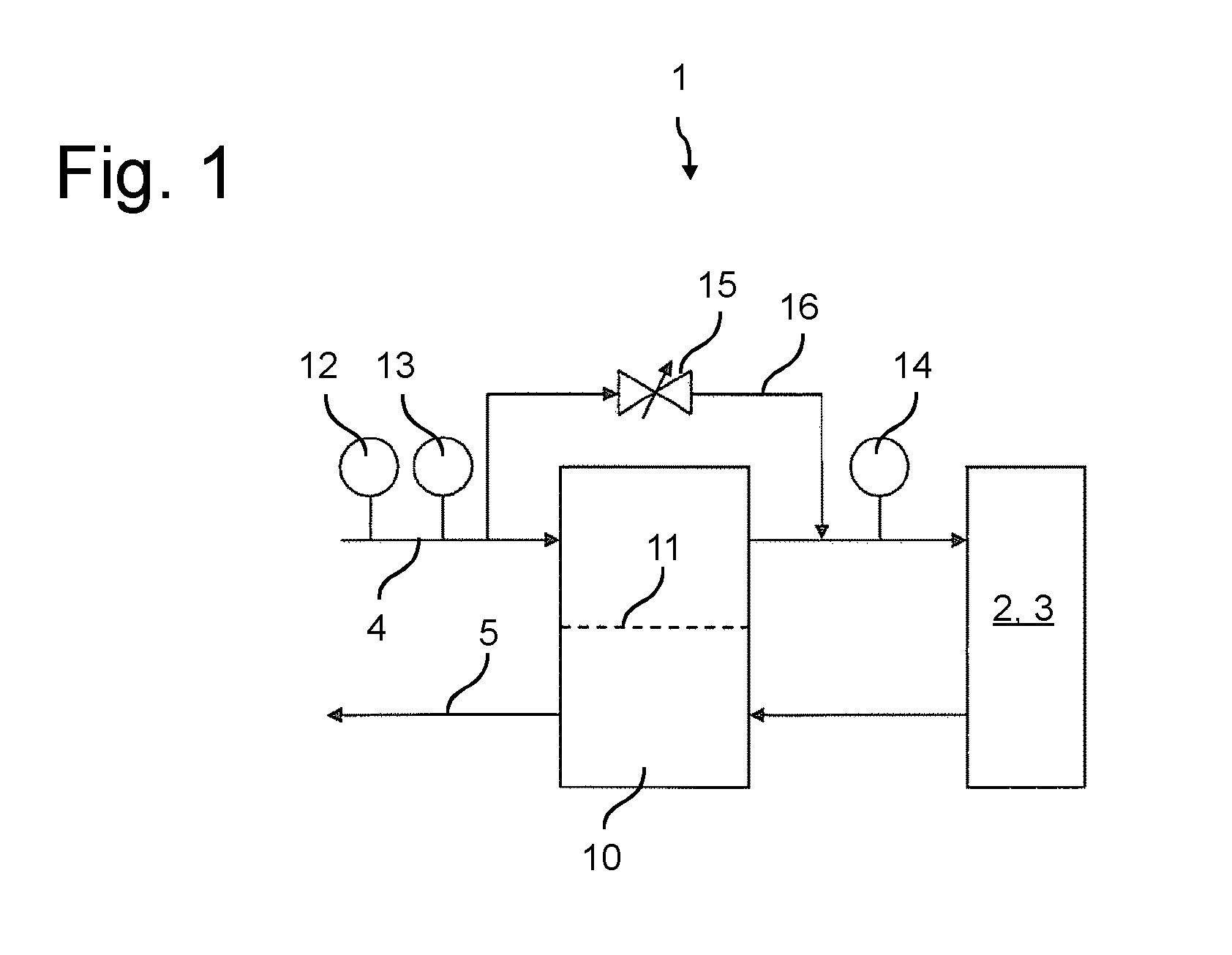Ascertaining fuel cell inlet humidity by means of pressure sensors, and a mass flow rate-dependent control of the humidifier bypass
a fuel cell and humidity measurement technology, applied in the direction of fuel cells, electrical equipment, electrochemical generators, etc., can solve the problems of sensor interference, errant measurement, and calculation is also susceptible to faults, and achieves simple, robust and cost-effective methods, and high efficiency. the effect of reducing the number of failures
- Summary
- Abstract
- Description
- Claims
- Application Information
AI Technical Summary
Benefits of technology
Problems solved by technology
Method used
Image
Examples
Embodiment Construction
[0023]A portion of a fuel cell arrangement 1 according to the invention is schematically depicted in FIG. 1. The fuel cell arrangement has a fuel cell 2, of which only the cathode 3 is depicted. The cathode 3 is thereby connected to a reactant feed 4 and a reactant discharge 5. Air is used as the reactant for the cathode 3 in the exemplary embodiment shown. Of course, other fluids, such as, for example, pure oxygen, are also conceivable as the reactant. A fluid mass sensor 12 is situated in the reactant feed 4. The mass per unit of time of the air supplied in the reactant feed 4 of the fuel cell 2 is measured by the fluid mass sensor 12. A humidifying device 10 is furthermore disposed in the reactant feed 4. Said humidifying device is used to humidify the reactant, in particular the air, because at least one of the two reactants, in this case the air supplied to the cathode 3 of the fuel cell 2, has to have a certain humidity for an optimal operation of the fuel cell 2. The humidify...
PUM
| Property | Measurement | Unit |
|---|---|---|
| humidity | aaaaa | aaaaa |
| humidity | aaaaa | aaaaa |
| pressures | aaaaa | aaaaa |
Abstract
Description
Claims
Application Information
 Login to View More
Login to View More - R&D
- Intellectual Property
- Life Sciences
- Materials
- Tech Scout
- Unparalleled Data Quality
- Higher Quality Content
- 60% Fewer Hallucinations
Browse by: Latest US Patents, China's latest patents, Technical Efficacy Thesaurus, Application Domain, Technology Topic, Popular Technical Reports.
© 2025 PatSnap. All rights reserved.Legal|Privacy policy|Modern Slavery Act Transparency Statement|Sitemap|About US| Contact US: help@patsnap.com

